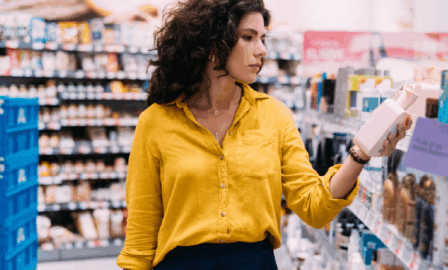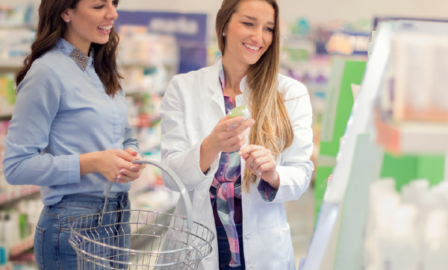The Business Case for Sustainable Packaging in Cosmetics
As consumers demand more environmentally-friendly options, cosmetics manufacturers can gain a competitive advantage by enabling sustainable packaging and eco-friendly products in cosmetics. Thirty-five percent of people are willing to spend more money on products that are better for the environment. Furthermore, a study by Nielsen found that sustainable bath products grew 14 percent from 2017 to 2018, compared to a one percent growth across the entire category. Now more than ever, becoming more environmentally-friendly can lead to short-term and long-term successes, especially as regulators continue to explore new channels for oversight in how cosmetics are created, marketed, and sold.
An uptick in natural disasters due to environmental changes means that certain supply regions are more vulnerable to disruption. Weather patterns can also impact the supply of raw materials, and a shortage of natural oils can affect the production cost of some beauty products. Sixty-five percent of companies surveyed reported that the physical impacts of climate change present business risks. Building flexibility and redundancy into the supply chain can reduce operational impact, should a supplier be affected by a natural disaster. Conducting risk assessments for existing and proposed manufacturing locations will also be key moving forward.
Making Sustainable Packaging a Reality
Another environmental issue facing the health and beauty industry involves the extensive use of non-renewable packaging. Consumers are much less likely to recycle cosmetic packaging than they are to recycle food and beverage packaging. The industry creates an estimated 120 billion packaging units per year, and personal care and beauty products comprise one-third of the materials found in landfills according to some reports. In order to address this issue, Colgate-Palmolive, Johnson and Johnson Consumer, Unilever, and L’Oréal have committed to making all their plastic packaging reusable, compostable, or recyclable by 2025. Finding a cost-effective solution that still preserves the product’s quality presents a challenge because cosmetic and personal care items can expire like food and beverage products can.
In order to address this issue while maintaining profit margins and product quality, innovators are testing several approaches to reduce plastic packaging. Manufacturers are turning to alternative materials, including glass, bamboo, and bioplastics made from sugar cane. Few companies have opted to use glass, however, since the material is heavier to transport. Brands like Aveda and Garnier have already increased the use of recycled plastics in their packaging. Lush cosmetics has even created package-free offerings for their retail stores. MAC cosmetics developed a program that allows customers to trade in six of their beauty containers for a free lipstick. Some companies are considering moving toward square over round bottles since the shape allows for more efficient packing for transportation.
Eco-friendly Health and Beauty Products Trending Now
Specific products are poised to gain popularity as consumers look to purchase more sustainable goods. For example, waterless beauty is entering US markets after several years of success in Asia. For a cosmetic to count as “waterless,” the manufacturing process must use the least amount of water possible. Because the final product also contains less water than a traditional formula would, it becomes more concentrated and takes less energy to transport. Mineral sunscreens have become more popular as researchers learn that chemicals like oxybenzone and octinoxate found in some sunscreens harm marine ecosystems. Some also believe that the zinc oxide and titanium dioxide used in mineral sunscreens is better for the skin. Hawaii passed a bill banning oxybenzone and octinoxate sunscreen in an effort to preserve coral reefs.
Manufacturers can increase environmental efforts while optimizing supply chains by monitoring supplier risk, embedding sustainable packaging, and offering more green options to align with consumer trends. Customers will return to brands that make a conscious effort to manage their resources in a more environmentally-friendly way.
Subscribe to Clarkston's Insights
Coauthor and contributions by Sabrina Zirkle



